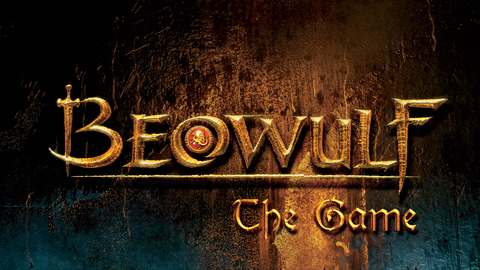This analysis of Lewis Carroll’s “How doth the Little Crocodile” is divided into three parts – context, rhyme scheme and rhetorical devices, and themes.
Context: As mentioned in summary, “How doth the Little Crocodile” appears in Carroll’s most famous children’s book entitled Alice’s Adventures in Wonderland. This poem appears in Chapter 2, and Alice recites it. However, it is a mistake made by Alice when she recites this poem. In fact, she had meant to recite a completely different poem – a common Victorian children’s poem known as “Against Idleness and Mischief’ and written by a poet called Isaac Watts. What leads Alice to make this mistake is that “Against Idleness and Mischief” and “How doth the Little Crocodile” share the same rhyme scheme (which will be discussed in the next segment of this analysis).
Rhyme Scheme and Rhetorical Devices: Each of the 2 stanzas in this poem follows the same simple rhyme scheme – ABAB. It should not surprise us that Carroll chooses to use such an uncomplicated rhyme scheme. Alice is a little girl, and it would be implausible for her to be able to compose anything other than the simplest rhymes. Moreover, Carroll wrote Alice’s Adventures in Wonderland primarily for children, even though its semantic and mathematical puzzles have also delighted many adult readers. Most importantly, though, this poem parodies another well-known Victorian poem, and therefore, must of necessity stick to the rhyme scheme of that poem.
This poem analysis would be incomplete without discussing Carroll’s use of such rhetorical devices as personification and metaphor. Personification is a rhetorical device that is used to bestow human qualities on something that is not human. The poet uses the device of personification in this poem concerning the crocodile. Not only does he refer to the crocodile with the word “he” rather than the word “it,” but he also endows the crocodile with the human quality of intentional actions. He acknowledges that the crocodile’s tears are not the result of emotional distress but also shows how the crocodile generates them to capture his prey.
The poet uses the device of metaphor in line 3 of the 1st stanza. This rhetorical device is used when a covert comparison is made between two different things or ideas. Here the poet compares the tears of the crocodile with the waters of the River Nile.
Themes:
Parody: As mentioned before, “How doth the Little Crocodile” is a parody of “Against Idleness and Mischief” by Isaac Watts. A parody is meant to ridicule the original by mimicking its style, which is exactly what Carroll does. Watts’ poem begins with the line “How doth the little busy bee,” and it is clear to see how Carroll maintains almost the same sequence of words, simply changing the subject from the bee to the crocodile. Watts uses the bee as a model of hard work, and hence, the bee has a positive connotation in his poem. On the other hand, Carroll uses the crocodile’s deception and predation to give it a negative connotation in his poem. While Watts’ poem was used in Victorian households and schoolrooms to educate children, Carroll intends to reveal how ineffective, such teaching methods are. Alice may have been taught to recite the poem by Watts. Still, she is unable to recall it, specifically because it is not a great literary work but only one written for purposes of moral inculcation rather than entertainment and amusement, as Carroll’s own poems are and as children’s poetry ought to be like in general.
Deception: The first characteristic of the crocodile is deception. The phrase “crocodile’s tears” is used to mean false tears. This is evidence of the deceptive nature of crocodiles. They feast on their prey while shedding tears as if the killing of the prey is causing them emotional distress. However, this isn’t so. The crocodile is a crafty creature that tricks its prey into surrendering itself. The shedding of tears is not related to emotional status in any way, as Carroll shows us in this poem. Rather, it aims to enhance the physical appearance of the crocodile so that it can attract its prey and deceive the prey into offering itself up for the crocodile’s consumption.
Predation: Crocodiles are predators. As Carroll shows in the 2nd stanza of this poem, everything that the crocodile does is capture prey. The crocodile smiles as if it is welcoming the fish that are trying to swim towards the shore. It spreads out its claws as if it is creating space for the fish to move in. However, what the crocodile is really doing is trapping its prey in such a manner that the fish shall not be able to escape from its clutches. When the crocodile opens its mouth, it is not to utter a gentle word but only to gobble up all the fish to satisfy its own appetite.
Exoticization: The “wonderland” in the title of Alice’s Adventures in Wonderland was meant to be an exotic locale that can only be accessed through dreams and fantasies. That is why the crocodile is part of that realm. England is not a place where you usually find crocodiles. Rather they are found in more tropical climates, such as that of Egypt. This is what Carroll has in mind when he compares the crocodile tears with the waters of the River Nile. It is not unusual for a Victorian author to exoticize the Orient in this way. Thus it is clear that “wonderland” is not just a product of the author’s imagination but also of prevalent notions about the Orient as well.
Some online learning platforms provide certifications, while others are designed to simply grow your skills in your personal and professional life. Including Masterclass and Coursera, here are our recommendations for the best online learning platforms you can sign up for today.
The 7 Best Online Learning Platforms of 2022
- Best Overall: Coursera
- Best for Niche Topics: Udemy
- Best for Creative Fields: Skillshare
- Best for Celebrity Lessons: MasterClass
- Best for STEM: EdX
- Best for Career Building: Udacity
- Best for Data Learning: Pluralsight
















